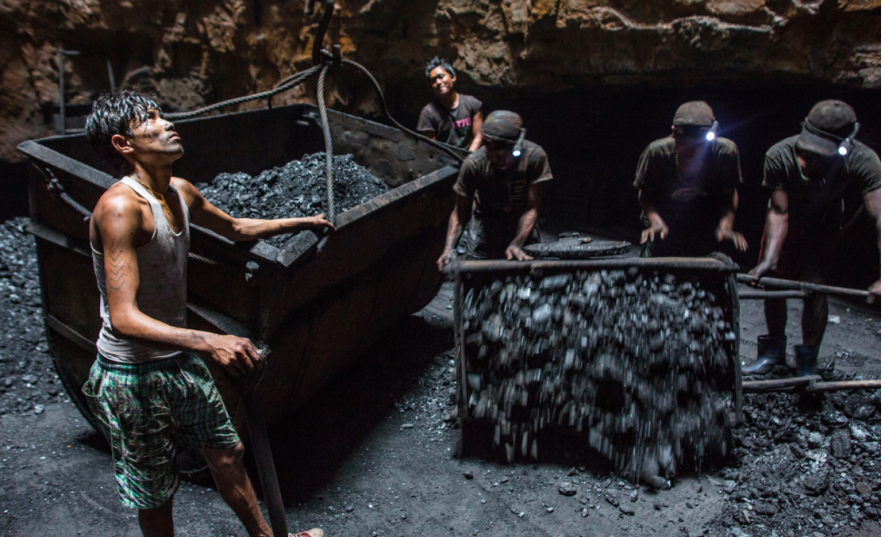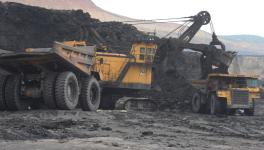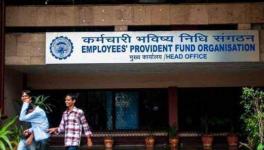How Coal Unions Have Kept PF Investments Minimal in Stock Markets

Image Courtesy: National Geographic
Kolkata: The Coal Mines Provident Fund Organisation (CMPFO) is also a Centre-administered provident fund organisation but its investment strategy differs significantly from that followed by its big brother, the Employees Provident Fund Organisation (EPFO).
The CMPFO is headquartered in Dhanbad in Jharkhand and is tasked with administering the Coal Mines Provident Fund and Miscellaneous Provision Act, 1948. The Act has within its purview all collieries under public and private sector control.
The trade unions operating in the coal sector, which are represented on CMPFO’s Board of Trustees, have so far been able to influence the organisations’ investment strategy, as informed quarters put it, due to their “persuasive skills and firmness”.
Against EPFO’s exposure of up to 15% in equities and up to 20% in private bonds, CMPFO restricts its investment in shares to a maximum of 5% and in private bonds to a maximum of 15%, to accommodate the views of trade unions.
The net result is the ring-fencing of CMPFO’s deployed funds from the volatility of share markets and the uncertainties of bond yields, which is much tighter than in the case of EPFO funds worth crores. The conservative, risk-averse coal sector unions prefer it that way -- their philosophy being to remain content with less but stable returns, say informed sources.
The coal trade unions, of course, exercise their option under the investment guidelines issued by the Union Finance Ministry every year, says CMPFO commissioner, Animesh Bharti. The non-trade union trustees of the board, whose chairman is the coal secretary, have at times tried to reason it out with union representatives that a slightly more liberal but cautious approach may not necessarily increase the risk element, particularly in the case of investment in the stock market.
The idea of the non-TU members seems to be to see if the exposure in equities can be stepped up gradually to 10% from 5% at present.
When asked to comment on this by Newsclick, the commissioner, who is also economic adviser to the Coal Ministry, avoided giving a direct answer. In fact, Bharti’s cryptic remark was: “For now, persisting volatility in the stock market rules out such moves and, in any case, trade unions have to agree. When the stock market stabilises and sentiment improves and when the trade unions willingly accept a somewhat liberal approach, we can see”, he said.
The tripartite CMPFO board has three representatives of the Union government, six of employers, six of employees and six of state governments. The commissioner is an ex-officio member.
Apart from the PF scheme, the organisation administers the Coal Mines Pension Scheme with effect from March 31, 1998 (before this, there was the Coal Mines Family Pension Scheme, 1971, which has now ceased to exist as a separate scheme). The third benefit is the Coal Mines Deposit Linked Insurance Scheme, 1976).
As per the 1948 Act, a coal mine means “any excavation where any operation for the purpose of searching for or obtaining coal has been or is bring carried on and includes”:
All boring and bore holes, shafts in the course of being sunk or not, all levels and inclined planes, any opencast working or quarry, all conveyors or aerial ropeways, machinery including railways / tramways and sidings, all workshops under the same management, any office of a coal mine, all power stations meeting the electricity needs of a coal mine or a group of coal mines, any premises for the time being used to deposit refuse from a coal mine and finally, all hospitals and canteens being run for the benefit of the employees of a coal mine.
There is total clarity as to the coverage of the employees under the schemes, that include all those working in the installations and facilities. It has also been clarified that coal includes lignite.
Contracters’ Workers Also Covered
The live membership of the PF scheme, as on March 31, 2019 stood at approximately 4.18 lakh, according to the annual report of the Coal Ministry for 2018-19. Over 80,000 contractors’ workers are taken care of under the scheme.
The cost of running CMPFO is met from the proceeds of an administrative charge payable by the employer at the rate of 3% of the compulsory contribution. The rate of contribution is 12% for PF and 7% for pension, which apply to both employers and employees.
An interest rate of 8.5% was paid in 2017-18 and for 2018-19, the Board of Trustees is yet to take a call, additional commissioner Anil Kumar Sinha told NewsClick.
The coal sector PF corpus currently is over Rs 1 lakh crore while the pension fund size is over Rs 1,500 crore. Actuarial exercise for the pension fund is undertaken once in three years, said Sinha, who added that an exercise for appointing asset management companies was underway and was expected to conclude soon. Last time, portfolio managers were appointed for three years.
On monitoring, Bharti said a system of concurrent audit was in place to ensure that the investments conform to the Finance Ministry’s guidelines and yield satisfactory returns. The investment committee of the Board of Trustees meets once in every quarter to review the performance of the fund managers, who also get to reinvest and manage the returns from the corpus.
It took the public sector management a few years to detect and delete fictitious names in the muster rolls of collieries because of the machinations of unscrupulous elements during the two-phase takeover of coal mines. Over the past many years, the CMPFO’s live membership has been shrinking with natural wastage, tighter replacement norms, efficiency drive and increasing thrust on mechanisation and induction of advanced technology for coal mining.
Once again, the Union government’s efforts to involve the private sector in coal mining to supplement the role of the public sector that has a dominant presence, have had limited success so far for a variety of reasons. These include intervention by the Supreme Court in allotments of coal blocks already made. It remains to be seen if the renewed efforts for privatisation, which includes allowing 100% foreign direct investment (FDI), will lead to development of a sizeable number of new coal projects. If that happens, the live membership of CMPFO may gradually see a perceptible increase.
The writer is an independent journalist based in Kolkata.
Get the latest reports & analysis with people's perspective on Protests, movements & deep analytical videos, discussions of the current affairs in your Telegram app. Subscribe to NewsClick's Telegram channel & get Real-Time updates on stories, as they get published on our website.
























